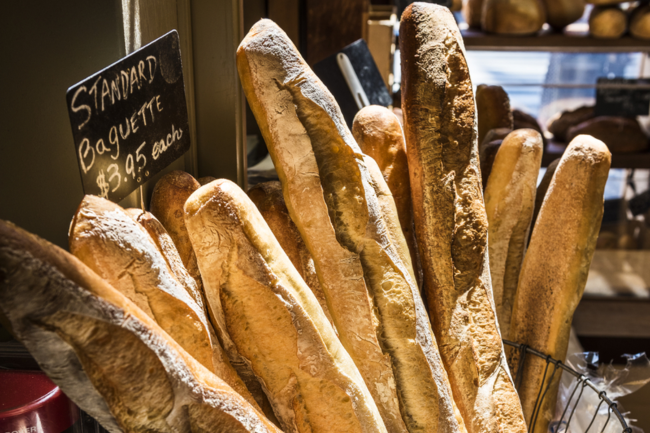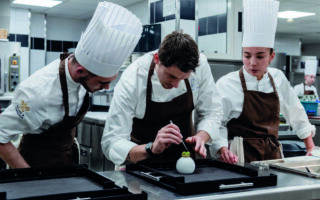
10 things you (perhaps) didn’t know about baguettes
As you may have heard, the baguette has been inscribed on the UNESCO list of the Intangible Cultural Heritage of Humanity, meaning it is to be protected for future generations to slather with butter and enjoy. Being foodie geeks at Taste of France, we sneaked a peek at an application form the French government’s Intergovernmental Committee for the Safeguarding of the Intangible Cultural Heritage sent to UNESCO to seek the baguette’s inclusion on the list. And we learned quite a lot about the humble loaf… here a few choice crumbs of bread-related knowledge:
- The culture of the baguette became widespread after the Second World War and today, it is the most popular kind of bread enjoyed and consumed in France.
- The artisanal know-how associated with the baguette dates back to the long loaves of the 17th century.
- The traditional production process comprises a series of stages: measuring/weighing and mixing the ingredients, kneading, first fermentation of the dough, division, relaxing, manual shaping, second fermentation, marking the dough with shallow cuts (the baker’s signature) and baking.
- The baguette differs from other loaves since it is composed of only four ingredients: flour, water, salt, leaven and/or yeast.
- The baker’s skill and creativity make each baker’s baguette unique: with the same basic ingredients, 50 bakers make 50 different baguettes.
- Baguettes are baked throughout the day in small batches and their recipe varies according to the temperature and humidity.
- The baguette plays an important role socially within its community: because it is meant to bought fresh each day, it means regular visits to bakeries, which become social hubs and encourage neighbours to interact more. Town dwellers generally live within 600m of a bakery, and in rural areas, half of the population lives less than 2.2 km from a bakery.
- Baguettes have given rise to specialist lingo: grigne (cuts made in the dough and the golden colour of the bread resulting therefrom), couches (the linen cloth on which the dough rises during the second fermentation]) and bakers’ slang such as enfourner jeune (putting in the oven young, ie. insufficiently fermented dough) and baguette coupée en sifflet (baguette cut like a whistle, i.e. slantwise).
- Baguettes play a key role in children’s upbringing too, with a bite of baguette often one of the first solid foods tasted and a trip to the boulanger to pick up a loaf often being the first responsibility entrusted to youngsters.
- A scheme called ‘baguette suspendue’ sees clients able to buy two baguettes and leave one at the baker’s, to be given to someone in need.
Share to: Facebook Twitter LinkedIn Email
More in Baguette culture, Baguettes, Boulangerie, Bread, French Bread, Intangible Cultural Heritage of Humanity, UNESCO



